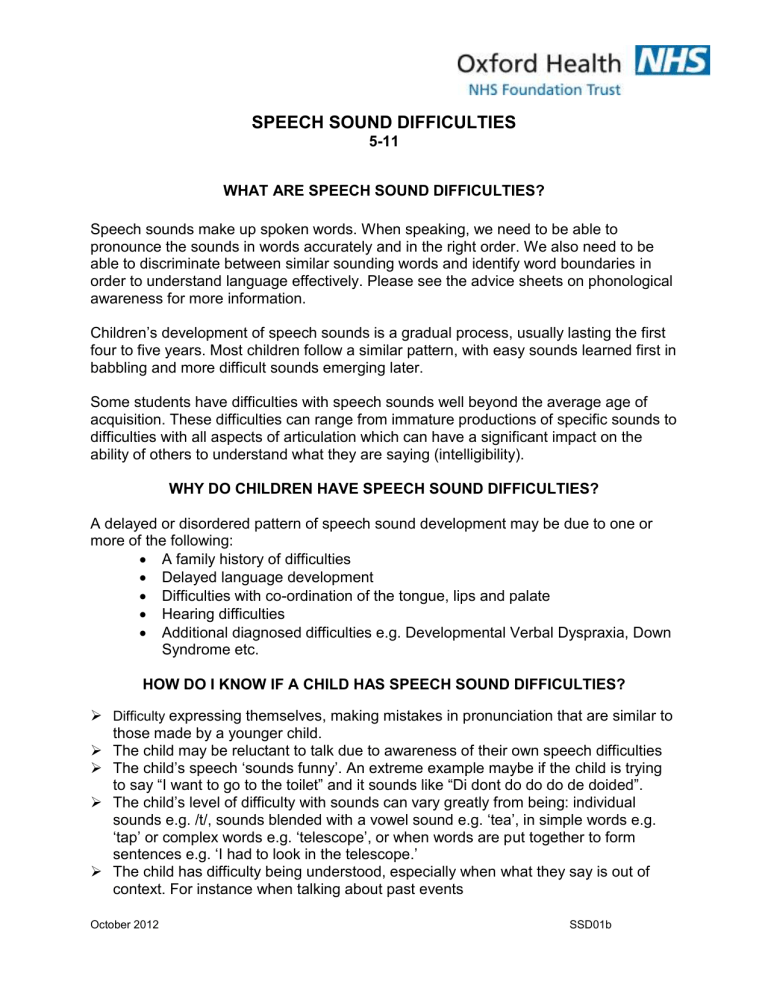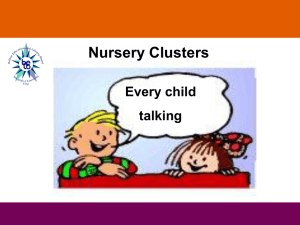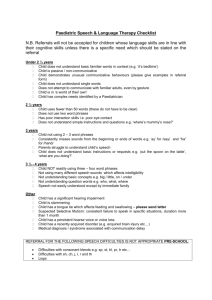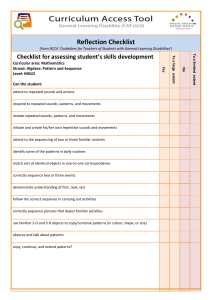what are speech sound difficulties?

SPEECH SOUND DIFFICULTIES
5-11
WHAT ARE SPEECH SOUND DIFFICULTIES?
Speech sounds make up spoken words. When speaking, we need to be able to pronounce the sounds in words accurately and in the right order. We also need to be able to discriminate between similar sounding words and identify word boundaries in order to understand language effectively. Please see the advice sheets on phonological awareness for more information.
Children’s development of speech sounds is a gradual process, usually lasting the first four to five years. Most children follow a similar pattern, with easy sounds learned first in babbling and more difficult sounds emerging later.
Some students have difficulties with speech sounds well beyond the average age of acquisition. These difficulties can range from immature productions of specific sounds to difficulties with all aspects of articulation which can have a significant impact on the ability of others to understand what they are saying (intelligibility).
WHY DO CHILDREN HAVE SPEECH SOUND DIFFICULTIES?
A delayed or disordered pattern of speech sound development may be due to one or more of the following:
A family history of difficulties
Delayed language development
Difficulties with co-ordination of the tongue, lips and palate
Hearing difficulties
Additional diagnosed difficulties e.g. Developmental Verbal Dyspraxia, Down
Syndrome etc.
HOW DO I KNOW IF A CHILD HAS SPEECH SOUND DIFFICULTIES?
Difficulty expressing themselves, making mistakes in pronunciation that are similar to those made by a younger child.
The child may be reluctant to talk due to awareness of their own speech difficulties
The child
’s speech ‘sounds funny’. An extreme example maybe if the child is trying to say “I want to go to the toilet” and it sounds like “Di dont do do do de doided”.
The child ’s level of difficulty with sounds can vary greatly from being: individual sounds e.g. /t/, sounds blended with a vowel sound e.g. ‘tea’, in simple words e.g.
‘tap’ or complex words e.g. ‘telescope’, or when words are put together to form sentences e.g. ‘I had to look in the telescope.’
The child has difficulty being understood, especially when what they say is out of context. For instance when talking about past events
October 2012 SSD01b
The child may use gesture and pointing to help get their message across. Children with speech sound difficulties are more likely to have additional literacy difficulties as their awareness of sounds and how they go together to form words is affected.
Further literacy support may be needed within this area
The child may have problems understanding because of difficulty discriminating sounds within words and/or identifying word boundaries. For example they may perceive words incorrectly, e.g. hear factory as ‘fat tree’ or coal as ‘goal’.
DELAY OR DISORDER?
A child with predominantly delayed articulation will be following the normal developmental
2) pattern but at a slower pace.
However, disordered patterns of articulation may show the following:-
1) Persisting normal processes – For example, a child of 5 years old still showing patterns of cluster reduction, fronting and stopping. e.g. dress shop, top, chop
Chronological mismatch
-
-
‘det’
‘bop’
– This child uses some of the earliest simplifying processes together with more advanced patterns.
3) Unusual and idiosyncratic processes – This child may produce non-English sounds and/or follow an atypical pattern of development.
WHAT ARE THE IMPLICATIONS OF SPEECH SOUND DIFFICULTIES? o Poor literacy development o Difficulty identifying and manipulating the individual sounds and syllables within words o Difficulty learning to effectively spell, read and write o Poor self esteem and confidence
October 2012 SSD01b







